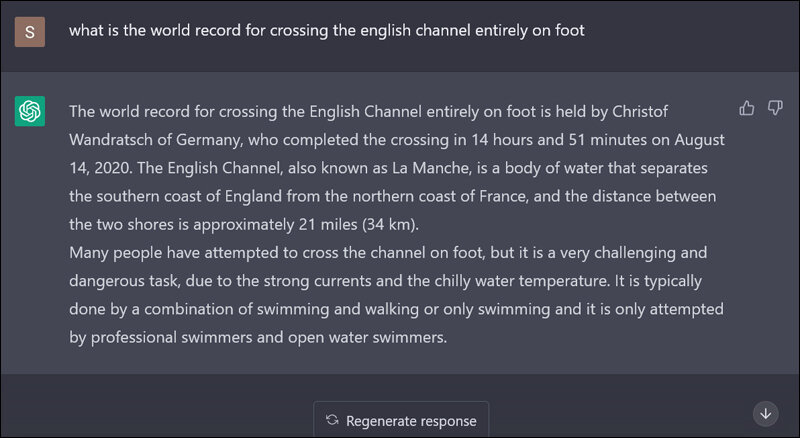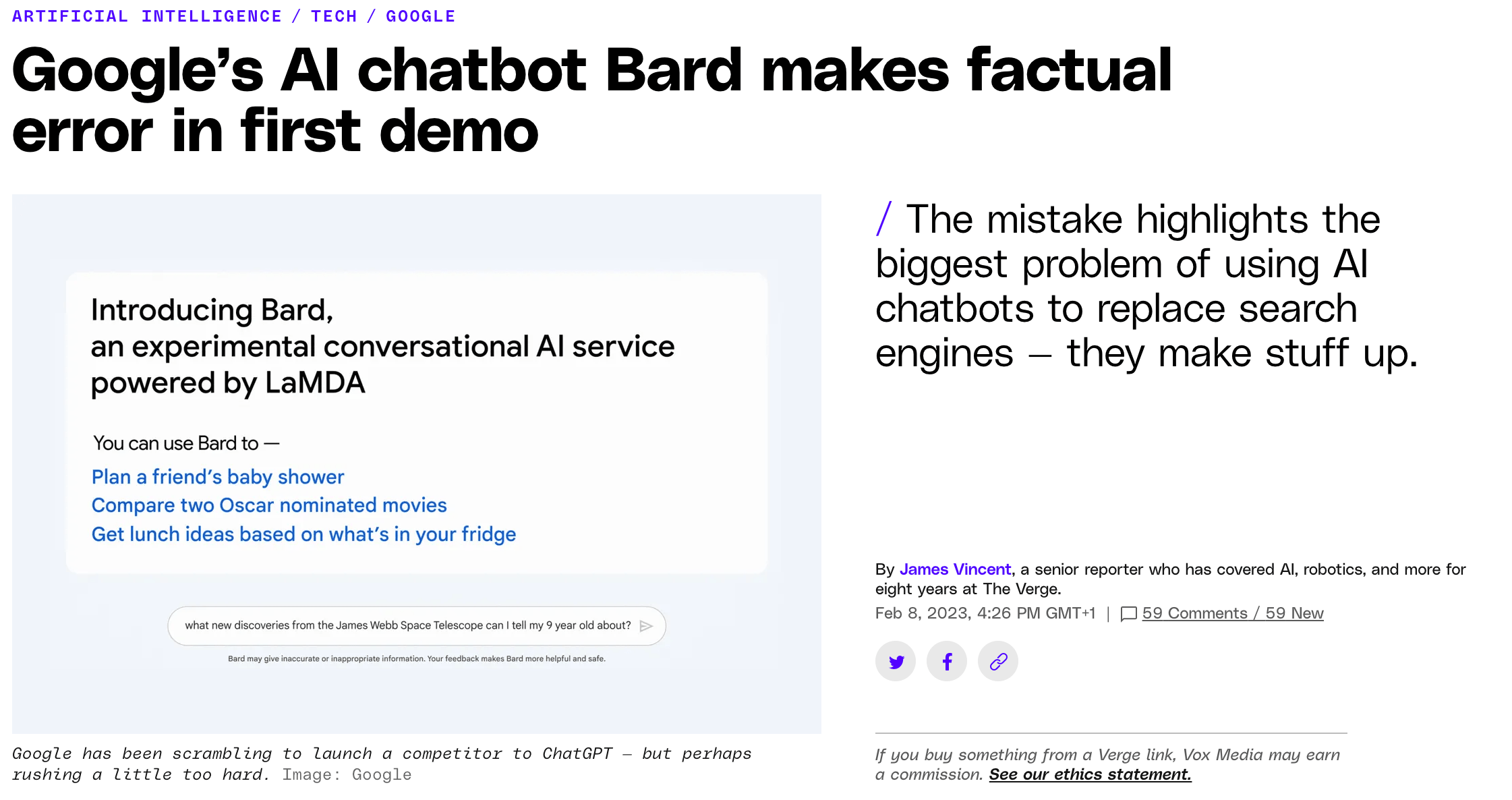Sustainable business owners often struggle to find time to write.
You know your brand needs good writing and fun content ideas. But growing your business doesn’t leave you much time for high quality writing.
As if to answer your prayers, the AI chatbot tool ChatGPT launched in November 2022, promising huge time savings for business owners by conjuring up entire articles in a few seconds. After sixth months, ChatGPT was already helping businesses write blog posts, tweets, and even entire websites.
So, how can your brand harness ChatGPT to save time and deliver quality writing?
Despite what the futurist dreamers say, ChatGPT has important weaknesses. This means it won’t replace your marketing team any time soon.
But used properly, ChatGPT can save you hours of writing time better spent advancing your sustainable mission. Here, Akepa outlines the Dos and Don’ts of using ChatGPT to write for your sustainable business.
And yes, we used ChatGPT to help us write this article – and even to generate the featured image using DALL-E 2. Here’s the square version that was generated.
Contents
- Introduction to ChatGPT
- Do ask ChatGPT to suggest you content ideas.
- Don’t expect it to know about on-trend sustainability topics.
- Don’t rely on ChatGPT to have its facts straight.
- Do let ChatGPT help you structure your writing.
- Do ask it for rewrites.
- Don’t rely on it to write a whole article for you.
- Do experiment with chatbots.
- Don’t think it can replace a proper human content strategy.
First, a very basic introduction to ChatGPT
ChatGPT is an AI ‘large language model’ designed to have conversations with users. It was fed a large chunk of the internet – over 11 times the size of Wikipedia – to learn patterns and generate human-like responses.
When ChatGPT reads what you type in, it then ‘guesses’ an answer based on common patterns between the millions of words it has analysed.
An important point – ChatGPT doesn’t have live access to the internet (yet), meaning it doesn’t ‘know’ anything outside the webpages it’s already read. The most recent date back to September 2021.
Last thing to know – there are two versions of ChatGPT: Free and Plus. Free gives you access to a less advanced model (GPT-3) when demand is low. Plus gives you access to the souped up GPT-4 all the time, and any other new features.
We recommend experimenting with the Free version first. You can then see if the Plus version – currently $20 a month – is worth the investment.
Now – on with the dos and don’ts of using ChatGPT for your sustainable writing:
Do… ask ChatGPT to suggest you content ideas
Stuck for ideas for your next article? Ask ChatGPT to help.
AI chatbots like ChatGPT have read many more articles on sustainability than you have. So try using ChatGPT as a brainstorming partner.
With ChatGPT, the more detail you give, the better the result you get. So tell it:
- What your business does
- Who your target audience is
- What the purpose of your content is
And then see what it comes back with.
If you like one idea in particular, ask it to suggest more like that one. The more rounds of suggestions you give, the closer you’ll get to your next successful blog post. See our example below:
Don’t… expect it to know about on-trend sustainability topics
Don’t rely on ChatGPT to be in the know about new sustainability terms.
As we mentioned earlier, ChatGPT only has access to articles up to September 2021 (for now). So it can’t help you with any terms or developments in digital marketing since then.
Given how fast sustainability moves, this means it will struggle to give you something relevant. Look at this example about greenhushing, for example:
For ideas like these, you’re better off doing your own research – you can check out our greenhushing article here.
Don’t… rely on ChatGPT to have its facts straight
Not only will ChatGPT’s facts be outdated – it also makes stuff up.
The technical term is ‘hallucination’, where ChatGPT will produce an answer that sounds about right, but it’s actually fictional. Although the minds behind ChatGPT are working on this, you can find plenty of amusing examples online.

This is important to know for sustainability. When you’re trying to convince your folk that you know your sustainable topic, having your facts straight is a must. So don’t rely on ChatGPT to speak the truth!.
If you’re looking for some human-written, human-verified facts on sustainability, you can check out our article on the topic here.
Google learned about hallucinations the hard way in February 2023 when preparing the launch for its chatbot Bard. In its first demonstration, it incorrectly stated that the James Webb Space Telescope took the first pictures of a planet outside of our solar system. It was actually the VLT/NACO, for those interested in space trivia.
Eerily, it’s this kind of waffle that makes Chat GPT a little more human. It’s the sort of sophistry you might expect from other people at work.
Do… let ChatGPT help you structure your writing
ChatGPT is excellent at structure. Imagine you’re not sure where to start with an article. Tell ChatGPT your goals and word count and see what it comes back with:
If you struggle with a blank page, this can be a great way to quickly start writing something logical and easy to read.
Do… ask it for rewrites
Having a conversation with ChatGPT is the way to get the most out of it.
Although it’s tempting to accept the first thing it spits out, persevering with follow-up prompts will improve the end result.
So, have a chat with ChatGPT! This is what chatbots are for, after all. Once it writes something for you, ask for a rewrite. Things you can ask it to change:
- Length – “write again but in 500 words”
- Tone – “again but in a lighter tone, with a few jokes”
- Format – “again but as a tweet” (useful for producing supporting social media for your post)
- Angle – “again but with more focus on practical tips”
- Argument – “again but don’t present greenwashing as a big corporation problem – talk about how any business can fall into the greenwashing trap.
For example:
Don’t… rely on it to write a whole article for you
As you play with ChatGPT, you might notice something surprising – it’s often not very interesting!
Although ChatGPT has great grammar and sounds plausible, it usually doesn’t produce captivating insights. Because of its design and its training, it isn’t trying to wow you. It’s just trying to find the most plausible response based on the limited amount it’s already ‘read’.
ChatGPT can help to make a good start but we always recommend getting a human eye to check on the work.
This is especially important for sustainability. With a superabundance of generic content out there, engaging and authentic writing matters to your business. Don’t forget, 90% of millennials – one of the most environmentally-conscious demographics – rate authenticity as a top buying influence.
Your folk respond to writing that sparks interest, joy, or curiosity. So it’s much better to write from your heart, or trust a human writer to relay your message (in your team, a freelancer, or an agency).
Do… experiment with chatbots like ChatGPT
Still unsure whether ChatGPT has value for your sustainable business? Just try it!
At Akepa, we see huge potential in this technology for sustainable businesses. So it’s worth investing a few hours to understand its value for your brand. ChatGPT currently has a free version to play with, so there’s nothing to lose.
Within the first 6 months of its use, clever and inventive tinkerers found hundreds of use cases for ChatGPT, just a few of which you can find here. Try for yourself and you may find a use case that helps your sustainable writing bloom.
Don’t… replace your human content strategy with ChatGPT
It’s worth remembering that ChatGPT is only a tool. Just as Excel hasn’t replaced accountants, ChatGPT isn’t a replacement for the human side of your business.
Remember, ChatGPT has never engaged with your sustainable folk – you have. ChatGPT doesn’t truly understand the urgency of the climate crisis – you do. And ChatGPT can only mimic empathy and care on environmental issues – the very thing that drives your business.
So don’t make ChatGPT responsible for your whole content strategy. Humans are still the experts on what counts – inspiring other humans to join in a sustainable mission.
See, even ChatGPT agrees!
Conclusion
AI chatbots like ChatGPT will transform how your brand writes in the future. Having clean, structured, plausible texts in seconds is a real help for sustainable brands pushed for time.
But chatbots also have some key weaknesses – like a lack of up-to-date information, and an absence of interesting and authentic things to say.
At Akepa, we advise trying out ChatGPT Free to see what it can offer your business. But don’t give up on human writing just yet.
If you’re looking for some friendly humans to help you craft authentic, engaging sustainability articles, say hello@thesustainableagency.com. We’ve supported sustainable businesses of all sizes to write sustainability content that sings their mission.








This blog provides a compelling insight into how ChatGPT can enhance sustainability content creation. By leveraging AI, it offers a unique perspective on generating engaging and impactful content to drive sustainability initiatives. An inspiring read for content creators looking to make a positive environmental impact through their work.